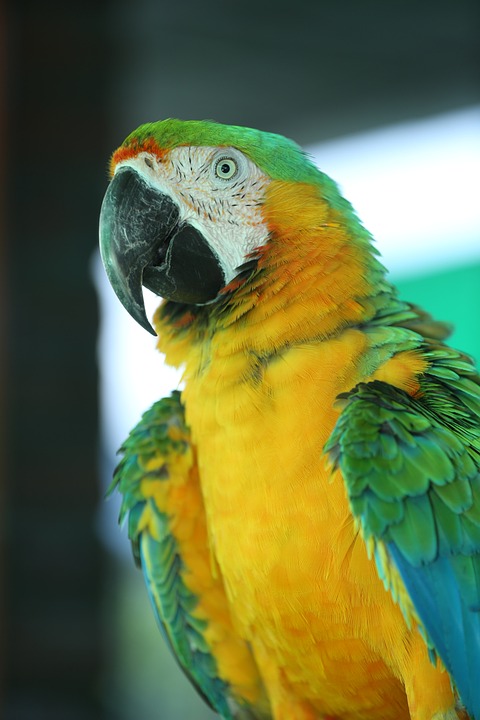Parrots are highly intelligent and social creatures that require mental stimulation and interaction to thrive. However, just like humans, they can also become overstimulated and overwhelmed. It is crucial for parrot owners to be able to recognize the signs of overstimulation in their feathered companions and provide them with quiet retreat areas to ensure their well-being. In this article, we will discuss the signs of overstimulation in parrots and offer valuable insights on creating a peaceful retreat for your parrot. Additionally, we will address some frequently asked questions related to parrot behavior and overstimulation.
Recognizing Signs of Overstimulation in Parrots
Parrots, being highly perceptive, can exhibit various signs when they are overwhelmed or overstimulated. By paying close attention to their body language and behavior, you can identify these signs early on and take necessary measures to provide them with a quiet retreat. Here are some common signs of overstimulation in parrots:
1. Feather Picking and Self-Mutilation: Parrots may resort to excessive preening, feather plucking, or even self-mutilation when they are overstimulated. These behaviors can indicate stress and a need for a calm environment.
2. Aggression or Irritability: Overstimulated parrots might display increased aggression towards humans or other birds, biting, lunging, or displaying territorial behavior. This aggression is often a sign that they need some downtime.
3. Vocalization Changes: Parrots may become excessively vocal or display unusual vocalization patterns when they are overstimulated. They may scream, squawk, or make distress calls, signaling the need for a quieter space.
4. Restlessness or Hyperactivity: Overstimulated parrots may exhibit restlessness or hyperactivity, such as excessive pacing, wing-flapping, or climbing. These behaviors can be a cry for a calm and peaceful retreat.
5. Loss of Appetite or Change in Eating Habits: Parrots experiencing overstimulation may show a loss of appetite or changes in their eating habits. They may refuse food or display picky behavior, indicating the need for a stress-free feeding area.
Creating a Quiet Retreat for Overstimulated Parrots
Providing a peaceful retreat area for your overstimulated parrot is crucial for their overall well-being. Here are some tips to create a quiet retreat for your feathered friend:
1. Choose a Secluded Location: Identify a quiet and less frequented area in your home where your parrot can retreat to when they need some downtime. It could be a separate room or a cozy corner away from noise and activity.
2. Create a Soothing Environment: Make the retreat area calming and comforting for your parrot. Use soft lighting, natural materials, and include a variety of perches, toys, and hiding spots to create a safe and secure space.
3. Minimize External Stimuli: Reduce potential sources of overstimulation in the retreat area. Keep noise levels low, avoid sudden movements or loud sounds, and ensure that there are no other pets or distractions present.
4. Establish Consistent Quiet Time: Set a regular schedule for quiet time in the retreat area. This will allow your parrot to anticipate and rely on this designated downtime, reducing the chances of overstimulation.
5. Monitor and Adjust: Observe your parrot’s behavior and adjust the retreat area as needed. If they continue to exhibit signs of overstimulation, consider modifying the environment or seeking professional advice from an avian behaviorist.
Frequently Asked Questions (FAQs)
Q: Can overstimulation lead to health issues in parrots?
A: Yes, chronic overstimulation can have negative effects on a parrot’s physical and mental health. It can lead to increased stress levels, weakened immune system, feather destructive behavior, and even self-mutilation.
Q: How long should I allow my parrot to rest in the retreat area?
A: The duration of rest time may vary for each parrot. It is important to observe your bird’s behavior and body language. Typically, allowing them a couple of hours of uninterrupted quiet time daily is beneficial, but some parrots may require more or less.
Q: What toys are suitable for an overstimulated parrot in the retreat area?
A: Opt for calming and interactive toys that promote mental stimulation without overwhelming your parrot. Puzzle toys, foraging toys, and chew toys made from safe materials are excellent choices.
Q: Should I cover the cage during quiet time in the retreat area?
A: Covering the cage partially or fully during quiet time can help create a sense of security and reduce external stimuli. However, it is essential to ensure proper ventilation and allow some visibility for your parrot.
By recognizing the signs of overstimulation in parrots and providing them with a calm retreat area, you can help maintain their mental and emotional well-being. Remember to always prioritize your parrot’s needs and seek professional advice if necessary.









